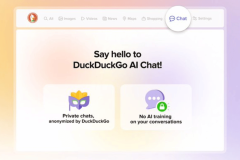Running a business requires a lot of paperwork, even when everything is done digitally and through online communication. The sheer quantity of documentation that professionals must process on a regular basis is mind-numbing. Fortunately, AI technology can reduce the time wasted on typing numbers and shifting papers. One of those solutions is OCR software. This innovation can reduce the time and hassle required in the all-too-common manual processing of image-only documentation.
What is OCR software?
OCR stands for optical character recognition. In layman’s terms, this is often called text recognition.
Companies use OCR software to collect critical data from non-digital documents. Traditional text-driven word processors and similar software can’t easily read these. This could be anything from scanned documents to PDFs or photos.
Quality OCR software uses cutting-edge technology, such as artificial intelligence, to identify and isolate the individual letters and words on an image. Different packages can even include specialized features that differentiate between subtle elements, such as various forms of handwriting.
This is called intelligent character recognition, or ICR.
Once it has analyzed the unstructured information, OCR tools then reconstruct those elements into sentences in a live digital format. This means you can take a static image that contains information — such as a scan of a hand-written document — and turn it into an editable digital alternative. The program can then store these new files, keeping them tucked away in a format that you can easily search for or edit.
This form of automated data extraction removes the need for manual data entry. Unfortunately, this is a significant factor that plagues many professionals. In fact, according to Zapier, 76% of office workers reported spending up to three hours each day simply moving data from one place to another.
Utilizing a high-quality OCR software solution can eliminate a large portion of the time spent moving data around. This naturally reduces the time, cost, work, and other expenses associated with ongoing data management.
The 3 Best OCR Software Solutions Available
OCR software can make your work more efficient. However, the nuances of AI-driven software are complex enough that you’ll want to make sure you’re using a brand that has a track record of success. If you’re considering purchasing an OCR software solution for your business, here are three of the best options available.
1. Rossum
For Rossum, efficiency and automation are the watchwords, aiming to automate document communication throughout every step of the data exchange process.
Rossum’s intelligent document recognition solution does much more than simply extracting document text and turning paper into digital. Instead, AI-powered optical document recognition is all about cognitive data capture. This means that Rossum’s neural networks can read any document layout without preset rules or templates.
As the next step, it extracts, learns, remembers, and uses the new knowledge for automatic data extraction from any similar documents uploaded by the user. This way, Rossum’s OCR eliminates the need for human intervention. It does this from the moment documents are uploaded and stored to the moment they are recognized by the system in the future.
At the same time, its OCR software is smart enough to know when it needs help. It can also reach out and engage in two-way communication with a human operator. As a result, there is no confusion when changing an image to text or when other manual interventions are needed.
This gives users confidence that their documentation will be handled safely and effectively during the OCR process.
There is nothing more mundane and predictable than document management. Yet, for Rossum, this is precisely why humans shouldn’t be doing it. So instead, the company has designed its OCR software to help its clients spend their time on creative, high-value activities rather than typing numbers into spreadsheets.
2. Adobe
If you’re looking for an OCR with a strong track record and predictable results, look no further than Adobe. The cloud-based software provider has addressed OCR needs through a few different tools.
For instance, its Adobe Acrobat Reader DC (short for “document cloud”) is free. However, it provides users with a limited selection of actions. This includes signing and annotating existing documents, but its maker has set limitations on the program’s free version when it comes to OCR.
However, if you’re willing to stomach a rather pricey subscription, you can opt for Adobe Acrobat DC Pro. This elite software suite enables users to do everything PDF-related, from combining and splitting files to compressing and editing documents.
It also comes with OCR software that enables users to convert PDFs into editable files instantly. In addition, it extracts information, including more minor details such as maintaining the same font.
The primary caution with Adobe is the cost. Take the monthly fee with a grain of salt, as the fine print clarifies that, to purchase it, you need to commit to an annual subscription. However, there is a free trial version, too. This allows you to test the OCR capabilities of the software in your unique circumstances before making a long-term commitment.
3. Nanonets OCR
Nanonets is another OCR invested in cutting-edge tech to maintain its edge. The automation software brand meets most of the OCR requirements you would expect with similar tools. For example, it can be an effective way to automate the receipt and processing of image-based documentation.
Nanonets is also an innovative brand that focuses on promulgating the use of machine learning in business — including throughout database activities.
This application of Deep Learning means you can use Nanonets to create data extraction parameters that are unique to your needs. So, for example, you can define specific kinds of content you wish to glean from documentation, even if it’s pulling that same info from various unstructured items.
Nanonet’s AI learns and grows with its customers using the program. This forward-thinking business model means you’ll be getting the latest OCR tech with most upgrades. However, as with all smaller tech companies of this nature, you must be willing to live with glitches and shortcomings as the software undergoes a near-constant state of evolution.
Stop Wasting Staff Time (and Your Money)
OCR solutions have become a necessary tool for nearly any industry. For example, if you’re in business, you’re spending a lot of time pushing paperwork. And when that’s the case, any opportunity to automate document processing and free up hundreds and even thousands of person-hours each year should be a priority.
Review the recommended platforms above and consider how you can use them to revolutionize your efficiency, your team’s productivity, and ultimately your business’s bottom line.
Image Credit: Cottonbro; Pexels.com


















